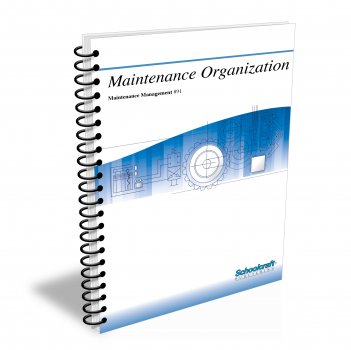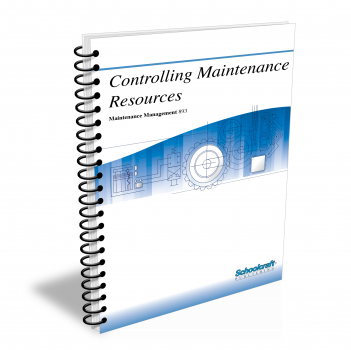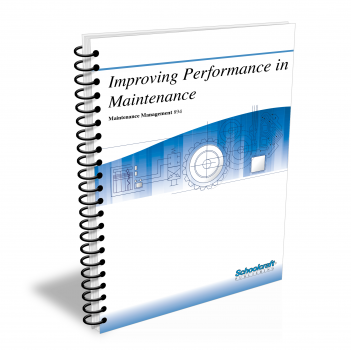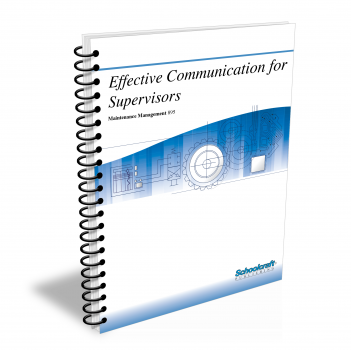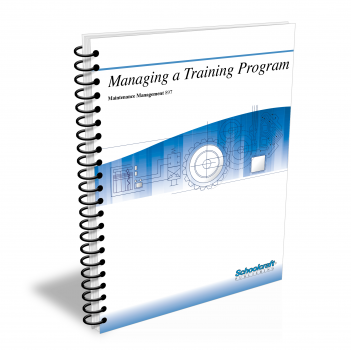Employee Relations
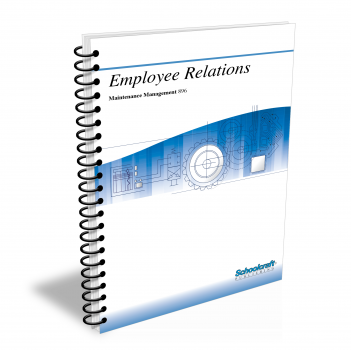
Course Number: 896
The Employee Relations textbook defines the supervisor's job in terms of maintenance planning, operations, and employee interaction. Demonstrates how good leadership requires administering discipline fairly, recognizing employee needs, and preventing employee strife. Discusses the basic information supervisors need in handling grievances and union disputes.
Does your curriculum require additional topics not included in this textbook? Build a customized version of the Employee Relations textbook below.
Recommended Contact Hours – 10
Preview a Chapter
Available Supporting Material
- Table of Contents
- Exam Copies
- Suggested Titles
Table of Contents
Chapter 1: Defining the Supervisor's Job
Topics: Administrative vs. job-related duties; Performance evaluations; Orientation and training; Discipline; Job-related supervisory duties; Budget your time; Improving a difficult job; Symptoms of the supervisor in trouble
Learning Objectives:
- List the elements of the supervisor's administrative duties.
- Calculate workload.
- Explain why a strong preventive maintenance program is desirable.
- Calculate crew efficiency.
- Explain the values and uses of counseling, progressive discipline, and training.
- Calculate productivity.
- List the elements of the supervisor's job-related duties.
Chapter 2: Supervising Hourly Personnel
Topics: Working within the system; Personnel services; Promoting productivity; Evaluating crew members; Absenteeism; Leadership and motivation; Getting along with the union; Why things go wrong; The good side of the job; Communicating with crew members
Learning Objectives:
- Explain the importance of safety and comfort in the workplace.
- Explain the importance of further training both to crew members and in terms of increased productivity.
- Describe the effect that a supervisor's good attitude can have on crew members.
- Describe the effect that dishonesty, incompetence, or indifference has on crew members
Chapter 3: Becoming a Successful Leader
Topics: Encouraging employees; Positive leadership; Lead by example; Conduct for employment; Enforcing the rules; Leadership methods; Building a team; Motivating employees; When motivation fails; The supervisor's limits
Learning Objectives:
- Explain the need to encourage the full participation of employees and methods for obtaining this participation.
- Describe positive leadership style.
- Explain how a supervisor can win the respect of his or her employees.
- List several factors to consider when determining corrective action measures.
- Identify three different management styles.
Chapter 4: The Supervisor's Role in Employee Relations
Topics: The importance of good labor relations; Productivity is affected by relationships; Your role as supervisor; Group leaders; Your leadership style; Relations with a union; Functions of union and management; Responsibilities of union and management The grievance procedure; Managing with the union
Learning Objectives:
- Explain how good labor relations affect productivity.
- List several characteristics of a successful leader.
- Explain why it is important for a supervisor to be directly involved with employees.
- Give examples of different leadership styles.
- Identify the functions of labor unions and company management.
- Tell what to expect and what not to expect from union representatives.
Chapter 5: Responding to Interpersonal Problems
Topics: What is insubordination?; Refusal to comply with orders; Failure to follow directions; Threats, obscene language, and physical assault; Horseplay; Fighting
Learning Objectives:
- Define insubordination.
- Give examples of refusals to comply with orders and explain how to deal with such acts.
- Describe instances in which employees fail to follow directions, along with the appropriate corrective action.
- Explain how to deal with threats, obscene language, and physical assault.
- Explain how to deal with horseplay.
- Describe ways of dealing with fighting among employees.
Chapter 6: Taking Corrective Action
Topics: Handling personal misconduct; Objectives of corrective action; Backing up corrective action; Organize for consistent corrective action; Examples of misconduct; Your role viewed by third parties
Learning Objectives:
- List the steps of progressive discipline.
- Recognize the types of evidence that you should or should not use to support your corrective action measures.
- Explain how to deal with absenteeism and other forms of lost time.
- List the factors that must be considered when correcting employees who have damaged company property.
- List procedures for dealing with employees who are suspected of theft.
- Contrast the performance of substance abusers against the performance of other employees.
- Recognize the types of false statements workers might make.
Chapter 7: The Grievance Procedure
Topics: The purpose of the grievance procedure; Your responsibilities as a supervisor; Steps in the grievance procedure; Step One - your share; Step Two - your boss's share; Step Three - last chance prior to arbitration; Arbitration - the final step; Arbitrators and their selection; Preparation for arbitration; Avoiding problems leading to grievances
Learning Objectives:
- Explain a supervisor's responsibilities with regard to a grievance procedure.
- Describe the various steps involved in a grievance procedure.
- Explain the importance of a no-strike/no-lockout clause.
- Describe the processes used to select arbitrators.
- List ways a supervisor can help a company prepare for an arbitration hearing.
- Tell why it is important to rehearse testimony before a hearing.
- Discuss ways to avoid problems leading to grievances.
Chapter 8: Labor Law Basics
Topics: The supervisor and labor law; Equal employment opportunity; EEO and the supervisor; Labor/management legislation; The Wagner Act; The Taft-Hartley Act; The Landrum-Griffin Act; Unfair labor practices; Occupational Safety and Health Act; Additional acts
Learning Objectives:
- Explain the supervisor's responsibilities in relation to equal employment opportunity.
- Name the basic labor law of the United States and two Acts that amended it.
- List the functions of the National Labor Relations Board.
- Give examples of unfair labor practices.
- Explain how an unfair labor practice charge is handled.
- State an employer's basic responsibility under the Occupational Safety and Health Act.
- Explain what happens if an employer fails to comply with OSHA standards.
Request Exam Copies
Exam Copies
Ready to see a copy of our textbooks? After selecting which textbooks you’d like to review for your course, you can submit your request by either logging in or creating an account so we know where to ship your exam copies. A representative from Schoolcraft will contact you to confirm and finish processing your request.
Exam copies are always free and yours to keep.
Selected Exam Copies
none selected
* Maximum of five copies can be ordered
